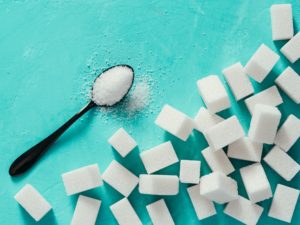
But sugars sneak up all over the place, often found in foods you might not consider. Sure, soda, flavored yogurts, fruit juices, cakes, and candies are clear culprits. But store-bought soups, cured meats, ketchup, and salad dressings can be teeming with them too. These can all add up to dangerously high sugar intake.
Sugars can be confusing too. There are some people that suggest eliminating all sugar sources from the diet, including those in fruit. But not all sugars are created equal. Sugars found naturally in fruit, vegetables, whole grains, and dairy are not harmful and are actually quite good for you.
Naturally occurring sugars—when consumed in their whole form—provide a steady stream of energy to your cells. They are generally part of a package consisting of fiber, which helps slow sugar absorption, as well as a host of other healthy antioxidants, vitamins, and minerals.
Foods with naturally occurring sugars help keep blood sugar levels down, while also being closely associated with lower risk for obesity, heart disease, diabetes, and lower levels of inflammation.
On the other hand, added sugars used by food manufacturers to provide flavor and shelf life boost the risk for the above conditions. So, how do you discern good sugar from bad sugar? The easiest is to limit your intake of processed foods, instead opting for whole foods. “Natural” foods like fruit, vegetables, whole grains, legumes, beans, dairy, and meats are all free of added sugars. If you do purchase packaged foods, knowing how to read ingredient labels is important.
A few things to look out for include:
- Sugar per serving. You may see, for example, that ketchup only has about 4 grams of sugar per serving. But the serving size is only 1 tbsp. When’s the last time you only used a tablespoon of ketchup on your hamburger or Sheppard’s Pie?
- Reading the ingredient list. If sugar is one of the top ingredients in a product, it’s probably something you want to avoid. It’s also good to know all of the alternative names for sugar. They include high fructose corn syrup, fructose, glucose, molasses, brown sugar, fruit juice concentrate, corn syrup, corn sweetener, honey, malt sugar, and words ending in “ose.”
- Total sugar intake. Maxing out at 36g of added sugar per day is about as high as you want to go. When it comes to naturally occurring sugars like those in fruit, whole grains, or dairy, don’t worry about the caps.
Knowing how and where to look for sugar is essential in protecting yourself from its various dangers. Paying a little more attention could pay big dividends for your health.